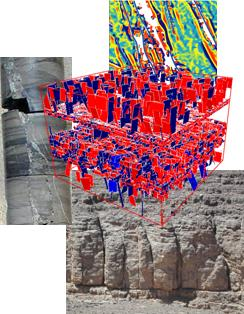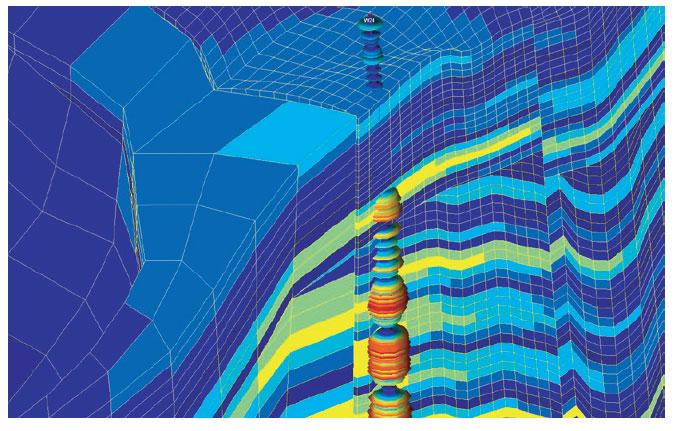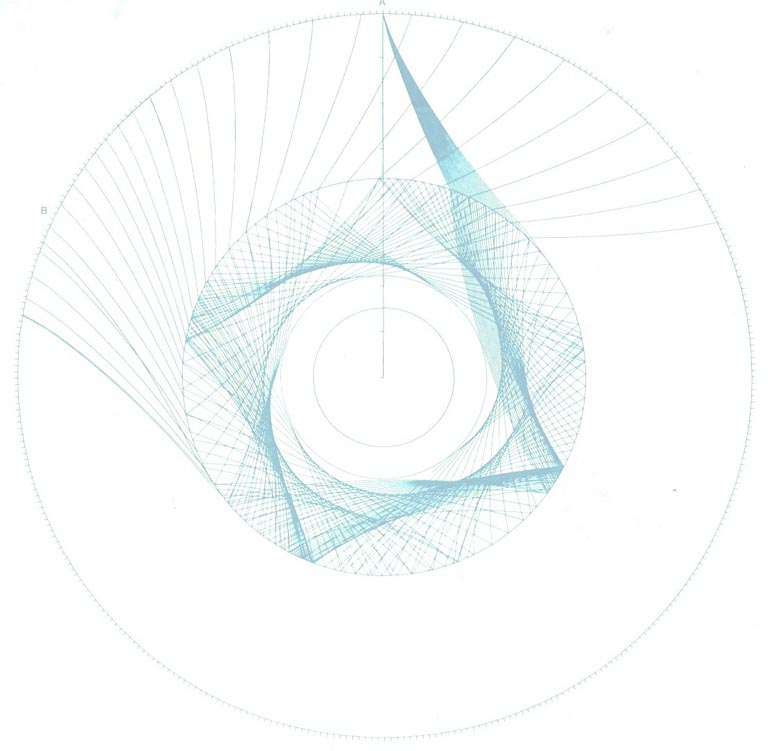Geosystems Engineering
| HOME | PETROPHYSICS | SEISMIC | GEOMECHANICS | DYNAMIC MODEL | ANALYTICAL METHODS | EXPLORATION | NEWS | CONTACT | ABOUT |
THE STATIC MODEL
The Static Model is the result of the Integrated Analysis ( Petrophysical, Seismic, Geophysical, Geological ) Geostatistically processed reaching the most enhanced resolution on the Geological Space.
The Static Model is a huge bata base containing all the reservoir informations which is used not only for visualization purposes but also as an input source for further interpretations routines.



Courtesy Beicip-Franlab

SERVICES
Enhanced Seismic Visualisation
Logs positioning and display
Heterogeneity and Structural Modeling
Gridding
Horizons, Layerring Determination
Zonation
Petrophysical Upscaling
Property Modeling
Facies Modeling
Geostatistical Modeling
Conventional Estimation
Conditional Simulation
Grid Based Simulation
Object Based Simulation
_______________________________________
VIDEO
_______________________________________
GEOSTATISTICS
spatial relationships
variographic analysis
conventional estimation
linear/nonlinear kriging
conditional simulation
grid-based simulation
sequential gaussian simulation
simulated annealing
object-based simulation
multiple realizations
upscaling
neural networks
heterogeneity
anisotropy
Petrophysic-Consultants
is a FRACA-FLOW user.
FRACTURED RESERVOIR CHARACTERIZATION and MODELING
The most powerful Modeling Program for fractured Carbonate
formations.
FRACTURE ANALYSIS
The objective is to analyze and understand the “fracture signature”
by the exhaustive review of available input data (well logs, borehole
imagery, 2D/3D seismic attributes, well tests) and interpretations.
FracaFlow provides:
• Improved geological data analysis:
fracture analysis, structural analysis and fault geometry analysis
• New dynamic data analysis:
flow meter analysis, permeability analysis, PI analysis, mud loss
analysis, production data analysis
• Density log computation and 3D density controllers:
an advanced way to compute fracture density logs and enable the building
of a 3D density driver based on multivariate non-linear statistics
• Integration of seismic, stratigraphic and production data
FRACTURE MODELING
The goal is to build a 3D geological model of the fracture network
consistent with the fracture data analysis.
FracaFlow provides:
• New methods of building a DFN (Discrete Fracture Network) to
model corridors and joints:
sub-seismic, stratabound and non-stratabound
• New model types: by region, fault-related, user-defined, grid-based
UPSCALING OF FRACTURE PROPERTIES
The goal is to reduce the complexity of the actual fracture system to a
few relevant equivalent parameters (at the scale of the reservoir
simulation cell scale).
FracaFlow provides:
• Computation of equivalent fracture network parameters (permeability,
block size) locally or at full field scale, using analytical and numerical
methods, required for single or dual media simulators
• Export of FracaFlow output for direct use in reservoir simulators: PumaFlow
or third-party software.
CALIBRATION OF FRACTURE PROPERTIES
The challenge is to calibrate the fracture model to dynamic data using
Kh, PLT and well test information.
FracaFlow provides:
• Automatic Kh calibration
• Dynamic tests simulation on DFN and optimization loop
FracaFlow is supported by oil companies including
ADNOC (Abu Dhabi), ENI (Italy), INA (Croatia), KOC (Kuwait),
LPI (Libya), NIOC (Iran), Petrobras (Brazil),
Petronas (Malaysia) and Statoil (Norway).
FracaFlow is a totally integrated, user-friendly fracture
modeling package enabling geologists and reservoir engineers
to understand better the impact of fractures
and their associated uncertainties.
FRACA is a Mark of BeicipFranlab